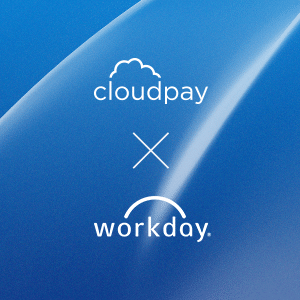As the payroll function becomes more complex and both employees’ and payroll teams’ expectations increase, it’s important for organizations to invest in the right technologies to get the most from their payroll function and deliver the best experience. However, with so many technologies and systems on the market, it’s easy for inefficiencies to creep in, with siloed functions and splintered data making it harder to maintain control.
This is especially true for organizations that operate on a global basis, with localized systems and processes diluting overall centralized control and uniformity. Add in rapid growth, and it becomes difficult to maintain a standardized approach to technology across all global teams.
A Workday payroll integration could solve this lack of overall control by consolidating and connecting multiple systems, technologies and processes regardless of scale or location. Human Capital Management and payroll integration means you can centralize all your data, delivering a standardized experience for both HR teams and system users. With human resource practices and payroll changing rapidly, having this single point of update and access for your data is essential.
To help you get an insight into how integration could be a great solution for your organization, we’ve created a three-part series that looks at Workday payroll integrations. To kick off the series, we’ll explore the five key benefits of Workday and Cloudpay integrations that solve core challenges many organizations face:
1. Fewer touchpoints and manual tasks
Reducing the manual aspects of payroll processing is crucial in today’s payroll environment, particularly at a global level. When integration is lacking, HR and payroll practitioners often find themselves grappling with time-consuming tasks and manual actions that become another opportunity for inefficiency and error.
A Workday payroll integration can alleviate employees from potentially mundane, low-value tasks like updating data across separate systems, enabling them to concentrate on more strategic activities. Plus, reduced errors and streamlined data means a better experience for end-users too.
2. Stronger process control
Workday is a system that is effective date-driven, ensuring that each activity is precisely timestamped with the user responsible. Paired with a payroll system with similar tracking, it becomes much easier to create a seamless end-to-end process with enhanced control.
With a comprehensive audit trail capturing all actions, which extends throughout your payroll process, organizations can more effectively track deadlines and activities, eliminating the need for the “he said, she said” game and manual spreadsheet reviews. From a compliance and security standpoint, this benefit can’t be overlooked.
3. Extends value and encourages adoption of Workday
While it’s always important to promote the adoption of any platform within an organization, the impact is especially broad with a Workday payroll integration, as end users encompass everyone within the organization.
Through integration, you can expand the tool’s value by making payroll contingent upon data within the Workday ecosystem. Moreover, pushing data from payroll back into Workday for employees to access on the backend encourages both administrative users and the entire employee base to engage with the tool.
A practical application of this integration is the ability to view payslips generated by an external payroll provider within the Workday platform. This not only streamlines processes and makes life easier for employees as they can access all their documents in once place, but also showcases the tool’s effectiveness in enhancing the overall employee experience.
4. Unifies systems and business processes
Standardizing processes and consolidating data into a single tool naturally fosters a more efficient workflow. This efficiency benefits not only the upstream processes that Workday addresses, such as onboarding and other activities leading up to payroll, but also the downstream aspects related to payroll activities. It also extends to further downstream processes involving the dissemination of payroll results for consumption, such as actual pay information.
This integrated approach streamlines operations, enhances efficiency, and ensures that all data sets are centralized within a single location. Consequently, you can evaluate and analyze data uniformly and comprehensively, simplifying the overall management and understanding of your organization’s data.
5. Supports business growth and scalability
Whether you’re experiencing rapid growth with additional headcount, going through mergers and acquisitions, or engaging in organic growth in new regions and jurisdictions, geographical expansion will inevitably come with its own set of challenges for HR and payroll.
However, with a robust Workday integration in place, you can direct your attention towards addressing these specific challenges while easily replicating and shifting the core 80-90% of your processes.
This approach is crucial because, although there will always be variations on a geographical basis, especially in terms of payroll operations, it allows your organization to maintain agility as it continues to grow and adapt.
Summary
If these reasons have convinced you that a Workday HCM and payroll integration is the right option, or you’d like to apply features to specific use case examples from your own organization, then CloudPay is here to support you. Our teams bring both expertise and experience in large and small Cloud-based payroll integrations, so contact us to have an open discussion about your payroll goals and requirements.
If you found this top five run-down helpful, and would like to speak to us about integrating your Workday HCM, visit our Contact Us page today.



